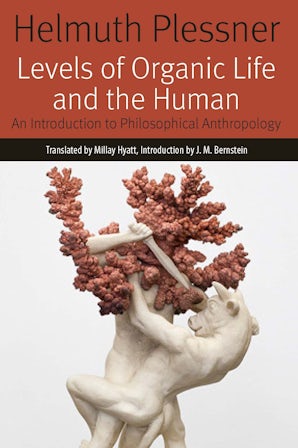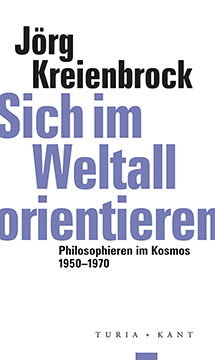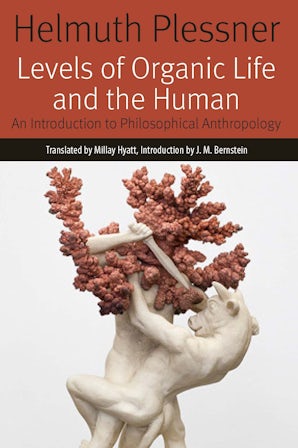 1968. Soziale Bewegungen, geistige WegbereiterInnen
1968. Soziale Bewegungen, geistige WegbereiterInnen
zu Klampen Verlag
2019
Paperback 28,00 €
268
Reviewed by: Matthias Warkus
»1968«, die Studentenbewegung, die Jugendrevolte, wie auch immer man das Phänomen genau nennen mag, ist etwas, wozu es insbesondere aus der Außensicht des politisch interessierten Laien, wie der Verfasser dieser Rezension einer ist, zwei konfligierende Leiterzählungen gibt. Die eine könnte man die orthodoxe oder revolutionäre nennen. Ihr zufolge war »1968« tatsächlich ein Epochenbruch, ein – im Guten oder im Schlechten – grundstürzendes Ereignis, der Beginn unzähliger Kausalketten, die erheblichen Anteil an der Hervorbringung der Welt, in der wir heute leben, hatten. Die andere Erzählung könnte man, um einen Ausdruck von Jacques Rancière auszuborgen, die »furetistische« nennen.[1] Hält man sich an sie, dann war 1968 weniger ein Anfang als ein Ende: der Kulminationspunkt und die Sichtbarwerdung einer bereits seit Jahren im Schwange befindlichen Transformation der westlichen Industriegesellschaften.
Im Zuge der Rechtsbewegung zahlreicher westlicher Demokratien in den letzten Jahren (oder doch zumindest der Aktivierung und Sichtbarwerdung ihrer latenten rechten Kräfte) liegt auch die Frage erneut auf dem Tisch, inwieweit die heutigen Verhältnisse ein Produkt von »1968« sind, was auch gleichzeitig die Frage bedeutet, was anders sein könnte, hätte »1968« größere oder geringere Auswirkungen gehabt. Nicht die schlechteste Lektüre dazu ist der Sammelband 1968. Soziale Bewegungen, geistige WegbereiterInnen, herausgegeben von Jens Bonnemann, Paul Helfritzsch und Thomas Zingelmann (Springe: zu Klampen! 2019, 270 S.).
Schon die Einleitung der Herausgeber führt auf hervorragende und kompakt Weise zu dem Problem der Einordnung des Phänomens »1968« heran (und diskutiert dabei mit hoher Aktualität die Bezüge zum »Rechtsruck« der letzten Jahre, 7–10). Die folgenden Beiträge gehen dieses Phänomen in schlaglichtartigen Einzelbetrachtungen multidimensional und ohne Anspruch auf eine »Entschlüsselung« oder klare Beantwortung der eingangs benannten Fragen an, wobei die Herausgeber (völlig zu Recht) eingangs betonen, dass »1968« Wurzeln hatte, die bis weit in die 50er zurückgehen (16).
Das theoretische Atomgewicht der Beiträge nimmt von vorne nach hinten weitgehend stetig zu. Den Auftakt machen Zeitdarstellungen: Sabine Pamperrien gibt in ihrem Beitrag »Szenen des Jahres 1967«, der laut Anmerkung auf einer Lesung aus ihrem Buch 1967. Das Jahr der zwei Sommer basiert, einen guten Überblick über die Ausgangslage in der Bundesrepublik und international. Sie arbeitet dabei überraschende Parallelen zur Gegenwart heraus. Wolfgang Kraushaar zeichnet anschließend die nach seiner These maßgeblich durch die Situationisten geprägte Entwicklung der in Deutschland führenden Akteure um Rudi Dutschke nach.
Der Beitrag von Hannah Chodura und Paul Helfritzsch nimmt sich für seine Kürze etwas viel vor, indem er anhand von Guy Debords Die Gesellschaft des Spektakels und Goyas berühmtem Alptraum-Capricho eine Neuausdeutung des Traums als Metapher für die kapitalistische Gesellschaft versucht. Deutlich »süffiger« liest sich der Aufsatz von Christian Dries, der in seinem Aufsatz einen hilfreichen Überblick über verschiedene Parameter des politischen Engagements von Günther Anders vor und um 1968 gibt.
Michael Jenewein und Jörg Müller Hipper beschäftigen sich in ihrem Beitrag am Beispiel der Rede Michael Köhlmeiers am 5.5.2018 mit den sartreschen Begriffen von engagierter Literatur und von Literatur überhaupt. Werner Jung diskutiert knapp, aber informativ die Lukács-Rezeption in der Studentenbewegung vor und um 1968, wozu Lukács’ Positionen zum Realsozialismus, aber auch seine Wirkung in die Inhalte von Lehre und Forschung (insbesondere in der Germanistik) gehören. Sein melancholisches Fazit ist allerdings, dass eine tatsächliche produktive und das Gesamtwerk nicht verzerrende Rezeption nie stattgefunden habe.
Gerhard Schweppenhäusers Beitrag über »Marcuse und die Metaphysik« liefert über die Erwartung des Titels hinaus eine kompakt und kurzweilig geschriebene Zusammenschau der frühen kritischen Theorie insgesamt und ihres Verhältnisses zur Metaphysik im Speziellen, die gegen Ende in eine Parallelsetzung von Marcuses und der heutigen Zeit einmündet. Diese geht mit einer in der kurzen Form arg thetisch und formelhaft wirkenden Programmatik für eine Erneuerung der kritischen Theorie einher, wie man sie schon öfters gesehen hat. Der Verfasser dieser Rezension ist in der »Szene« der gegenwärtigen kritischen Theorie ein informierter Außenseiter und weiß nicht so recht, was er von den immer neuen Aktualisierungsforderungen zu halten hat. Manche Punkte Schweppenhäusers erscheinen empirisch fragwürdig, dort, wo zum Beispiel die Rede davon ist, Phantasie konzentriere sich heute »auf das Ausmalen ›technischer Utopien‹«; während zu Marcuses Zeit und noch bis weit in die 1970er, wenn nicht 80er technische Utopien mit fliegenden Autos, Kuppelstädten, Raumkolonien, Abschaffung von Krankheit und Leid seriös präsentiert wurden,[2] hat dies heute eigentlich aufgehört. Die technischen Utopien unserer Zeit, soweit man sich überhaupt noch traut, welche zu äußern, sind sozialtechnische Utopien von »Connectivity« und »Digitalisierung«. Diese kritisiert Schweppenhäuser am Ende seines Beitrages eher schematisch und wenig überzeugend.
Ebenfalls Einführungscharakter hat Alfred Betscharts Beitrag über »Die Vordenker der sexuellen Revolution«, der in großem Bogen von Freud über Reich, Marcuse, Margaret Mead und Kinsey, Gide und Genet, Kerouac und Ginsberg die Wurzeln der sexuellen Befreiung der 60er skizziert, vor allem aber dichte Belege dafür liefert, dass der Einfluss von Sartre und Beauvoir auf diese kulturelle Bewegung nicht zu unterschätzen war. Der auch sprachlich gelungene Aufsatz schreckt vor zielsicheren Spitzen nicht zurück (wenn etwa mokant und eher nebenbei die »in der Frankfurter Schule nicht unübliche[] Umwandlung bildungsbürgerlicher Ideale in vermeintliche linke Postulate« aufgespießt wird, 154f.), lehnt sich aber hier und da etwas aus dem Fenster (es wird etwa angedeutet, Literatur habe nur noch bis in die 1970er eine »außerordentliche Reichweite in der Gesellschaft gehabt, 157, oder »die Ephebophilie« sei »bis in die 1980er Jahre die dominante Form von Homosexualität« gewesen (158), ohne dass dies belegt wird).
Eine pièce de résistance des Bandes, nicht nur aufgrund des gerade erschienen »neuen Houellebecq« Anéantir, stellt für mich der Aufsatz des Herausgebers Jens Bonnemann dar, der sich mit eben jenem französischen Bestsellerautor und seinem Verhältnis zum Erbe der sexuellen Befreiung beschäftigt. Er zeigt, deutlich detaillierter als Betschart zuvor, die Bedeutung von Wilhelm Reich für »die 68er« auf und arbeitet vor allem genau heraus, dass das der freudomarxistischen Kulturtheorie Marcuses immanente Konzept einer Befreiung des Eros nichts mit der zur wirtschaftlichen Deregulierung homologen Befreiung des Sexus bzw. des »Sexual Marketplace«[3] bei Houellebecq zu tun hat.
Jörg Müller Hipper führt in seinem Beitrag mit und gegen Helmuth Plessner den Nachweis, »dass soziale Konzepte der maximalen Nähe und Offenheit«, sprich der Gemeinschaftlichkeit im Gegensatz zur Gesellschaftlichkeit, entgegen der Intuition zahlreicher »68er« keine gangbare Grundlage für neue, bessere Formen menschlichen Zusammenlebens darstellen. Im Gegenteil müssten solche Formen schon aus rein anthropologischen Gründen auf einer Gesellschaftlichkeit von Distanz und Takt, »die Möglichkeit, unbehelligt zu bleiben, nicht mitmachen zu müssen« (205) aufbauen.
Herausgeber Thomas Zingelmann nimmt im Anschluss die beliebte Vorstellung auseinander, die verschiedenen Gegenkulturen, die heute mit der Zeit von »1968« assoziiert werden, seien miteinander verflochten und irgendwie eine Einheit gewesen. Er unterscheidet die verschiedenen Unterströme in kollektivistische Protestbewegungen und individualistische Gegenkulturen (und bleibt damit im Groben in der Spur von Müller Hipper zuvor). So liefert er eine knappe, aber informative historische Beschreibung und Einordnung von Beat Generation und Hippies als Vertreter des unpolitischen Gegenkulturaspekts.
Der dritte Herausgeber, Paul Helfritzsch, konzipiert in seinem Beitrag, der nicht mehr unmittelbar kulturhistorisch ist, im Ausgang von Jean-Paul Sartre und Frantz Fanon die Rolle des Intellektuellen als Instanz der performativen Benennung von Unterdrückungsverhältnissen auf Grundlage von Theoriewissen. Auf dem Intellektuellen liegt nach Helfritzsch eine »ontologische Verantwortung«, also eine Verantwortung für das Verfasstsein der Welt in durch diese performativen Benennungen erst etablierten Strukturen von praktischen Begriffen.
Der Band schließt mit einer geschichtsphilosophischen Betrachtung von Peggy Breitenstein, die sich implizit auch gegen eine Reihe der versammelten anderen Beiträge stellt, indem sie mit einem benjaminschen Geschichtsverständnis den Wert von Versuchen der Geschichtsschreibung, die Fragen wie »Was war…?« und »Was bleibt von…?« stellen und sie von berufenen Zeitzeugen (»Siegern«) deuten lassen (245), allgemein in Frage stellt. An verschiedenen Belegen (Erinnerungen der Malerin Sarah Haffner, die Thesen des Westberliner Aktionsrats zur Befreiung der Frauen sowie Kommentare und Reaktionen darauf wie das berühmte »Penisflugblatt«) entlang zeigt sie die der Studentenbewegung als Lebensstil und als politische Bewegung entgegen ihrem revolutionären Anspruch innewohnenden patriarchalischen Strukturen und Selbstwidersprüche auf. Ihre Bilanz bleibt eine melancholische: dass die »selbstreflexive und selbstkritische Praxis« (259), die jede Emanzipation mit Marx sein müsse und die in den weniger theoriegesättigten feministischen Seitenbewegungen von »1968« noch eher zu finden gewesen sei, bis auf Weiteres höchstens Dialogräume und solidarischen Rückzug bedeuten kann, da das Erbe der emanzipatorischen Diskurse bis heute zumindest im akademischen Raum vor allem in Form von »Debattenwettstreit und Konkurrenz«[4] (262) stattfinde. Breitensteins Aufsatz hat aufgrund seiner inhaltlichen Spannweite und stilistischen Brillanz die prominente Position am Schluss, sozusagen als »inoffizielles Fazit«, des Bandes mehr als verdient.
Insgesamt kann der Band, auch wenn nicht alle Beiträge gleich interessant sind und man sich mancherorts einige Belege mehr gewünscht hätte, trotz (oder gerade wegen) seiner Entstehung als Tagungsband für nicht ins Thema Eingelesene als gute Heranführung an das Phänomen 1968 dienen und auch Kundigeren die eine oder andere neue Perspektive vermitteln. Ein Wermutstropfen bleibt die leider nicht geringe Zahl von nicht nur Tipp-, sondern auch Grammatik- und Trennfehlern, über die man in der Lektüre immer wieder stolpert. Die Frage, ob »1968« nun eher Ursache oder eher Wirkung war, löst sich beim Studium des Bandes jedenfalls nach und nach zusammen mit jeder scheinbar kompakten Substanz des Phänomens auf. »1968« erweist sich als Sammelbegriff für eine heterogene, allenfalls familienähnliche Vielfalt von zeitlich grob koinzidierenden Entwicklungen, deren Zusammenordnung unter einer leitenden Erzählung selbst vielleicht am ehesten so etwas ist wie eine popkulturelle Retrofiktion.
[1] Vgl. Jacques Rancière, interviewt von Julia Christ und Bertrand Ogilvie: »Republikanismus ist heute ein Rassismus für Intellektuelle«, in: Deutsche Zeitschrift für Philosophie 65.4 (2017), 727–761, hier 731.
[2] Drastisch vor Augen führt dies ein Blick z.B. in Ulrich Schippke, Die 7 Weltwunder von morgen, Gütersloh 1972, oder ders., Zukunft, Gütersloh 1974.
[3] Dieser Ausdruck ist in der Szene der militanten modernen Frauenfeinde (»MRAs«, »Incels«) in den sozialen Medien, die u.a. für ihre Unterstützung von Donald Trump und die Anstiftung mehrerer Massenmorde berüchtigt sind, der geläufige. Houellebecq kann, wenn nicht als Stifter, so doch mindestens als geistiger Vorläufer dieses Denkens gesehen werden.
[4] Der Verf. dankt Katharina Herrmann, München, dafür, durch sie schon vor längerer Zeit auf Karl Helds berühmte Sentenz »Ihr wollt ja lieber dichten« beim konkret-Kongress 1993 hingewiesen worden zu sein.






